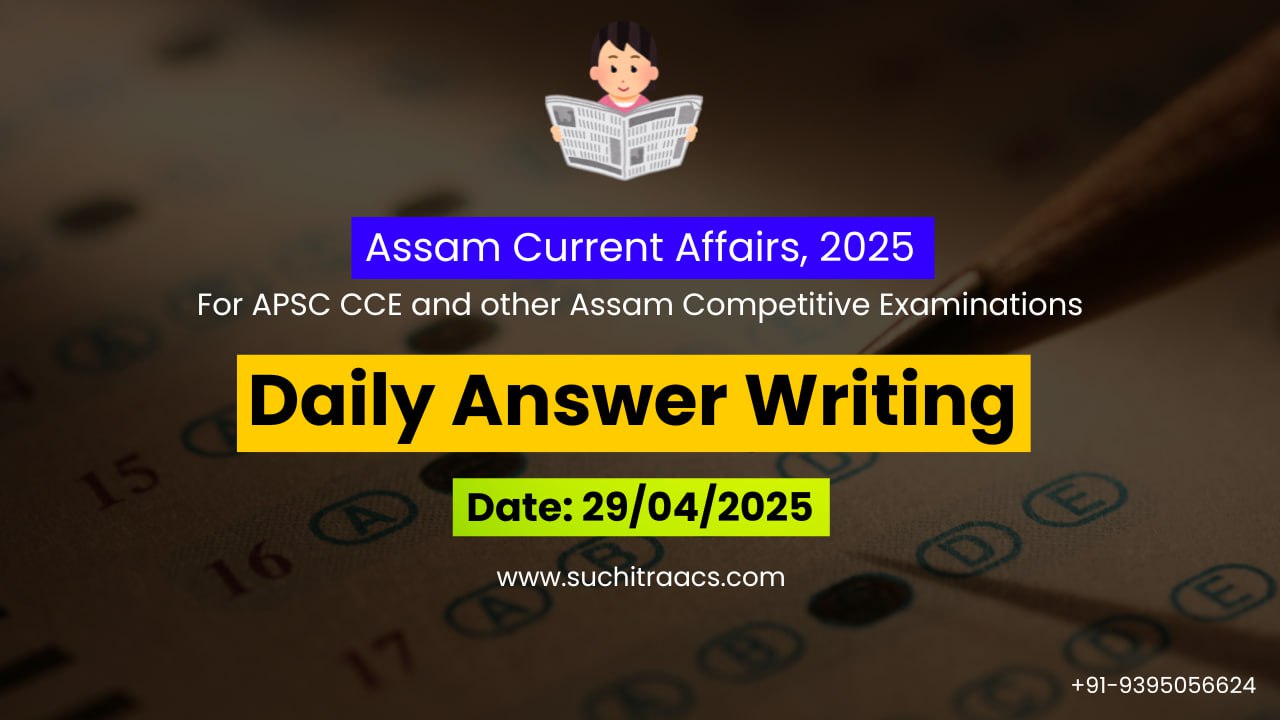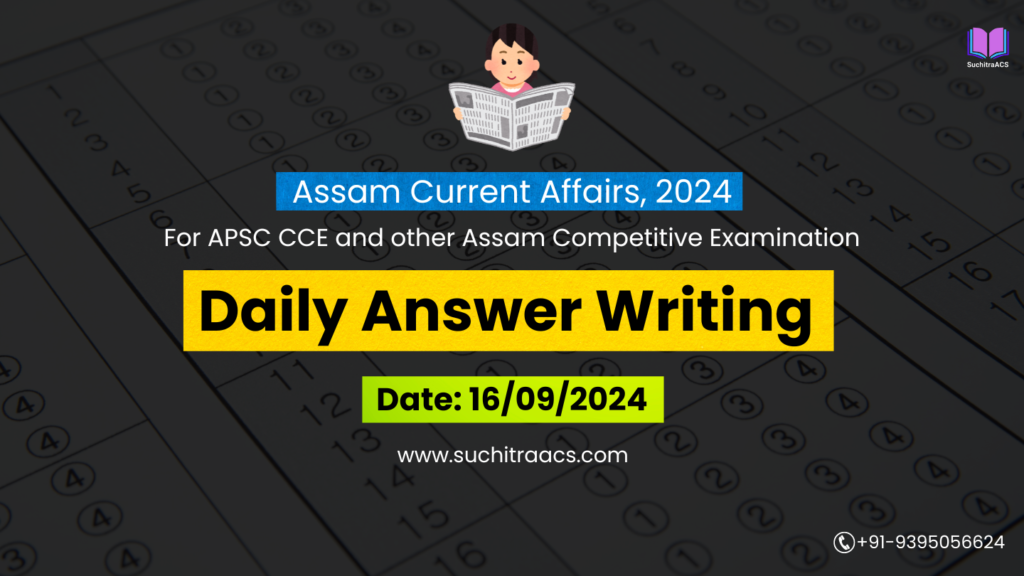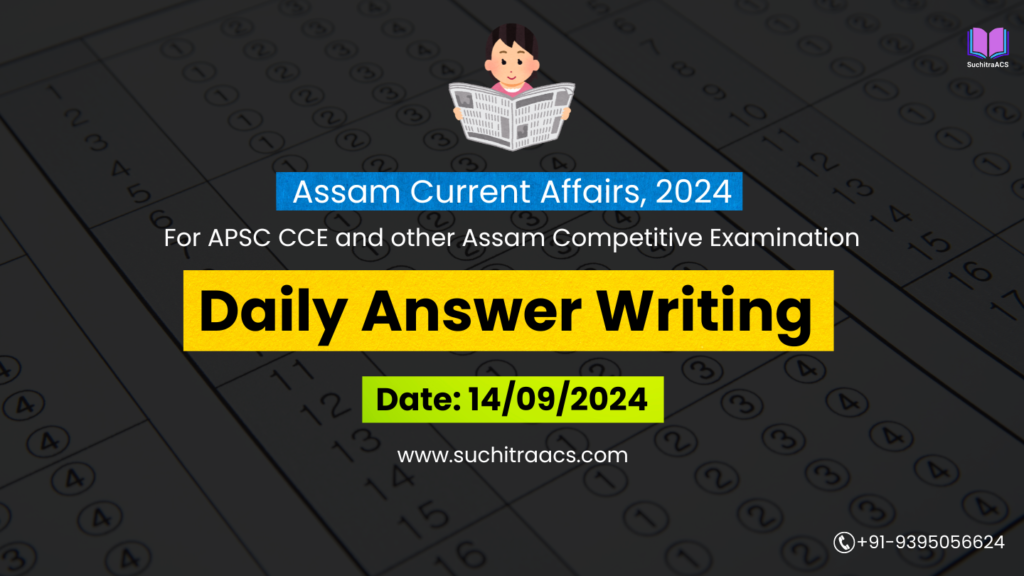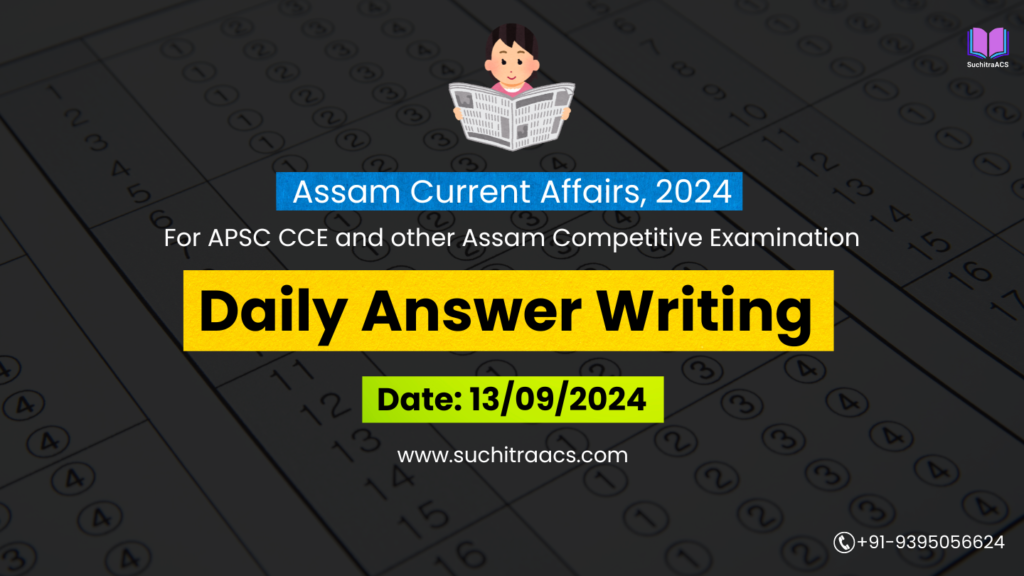APSC Answer Writing (Daily) based on Assam Tribune – 29/4/2025
For APSC CCE and other Assam Competitive examinations aspirants, practicing Daily Answer Writing is vital. This blog covers the most important Main question and its model Answer from the Assam Tribune today (29-04-2025).
📝 Mains Question (GS Paper 3 – Disaster Management | Urban Governance)
“Urban flooding in Indian cities is increasingly becoming a governance failure rather than a natural disaster.” Discuss with reference to Guwahati’s recurring flood crisis. Suggest a sustainable mitigation roadmap.
🔹 Introduction
Urban flooding is no longer a seasonal anomaly but a structural failure of city management. Cities like Guwahati, despite receiving moderate rainfall, experience disproportionate flooding due to encroachments, inadequate drainage, poor waste management, and lack of accountability. This recurring disaster demands a paradigm shift from reactive relief to preventive governance.
🔹 Urban Flooding in Guwahati: The Core Issues
| Issue | Explanation |
| Encroachment on Wetlands | Natural recharge zones like Deepor Beel have been drastically reduced. |
| Blocked Drains & Silt Mismanagement | Contractors leave desilted material on roads, re-clogging drains. |
| Concrete Urban Expansion | Reduced soil percolation due to rampant paving and construction. |
| Inadequate Infrastructure | Legacy stormwater drains insufficient for current rainfall intensity. |
| Weak Civic Monitoring | Lack of contractor accountability and SOP enforcement, despite repeated warnings. |
🔹 Why It’s a Governance Failure
- Poor urban planning—lack of flood zonation, hydrological mapping.
- Ineffective implementation of SOPs by Guwahati Municipal Corporation (GMC) and PWD.
- Delay in pre-monsoon desilting drives; tokenism over genuine preparedness.
- Inadequate community involvement in monitoring and maintenance.
- Absence of real-time disaster early warning systems at ward-level.
🔹 Impacts of Urban Flooding
- Public Health Crisis: Rise in dengue, leptospirosis, waterborne diseases.
- Economic Losses: Damages to vehicles, homes, small businesses.
- Infrastructure Strain: Rapid road degradation, disruption of schools and hospitals.
- Psychological Stress: Loss of faith in government responsiveness.
🔹 Sustainable Mitigation Roadmap
| Strategy | Implementation Steps |
| Hydrological Urban Planning | Conduct GIS-based drainage mapping and rainfall runoff modeling. |
| Nature-Based Solutions | Restore natural floodplains, build green corridors, recharge wells. |
| Contractor Accountability | Use geo-tagged, time-stamped progress tracking for desilting works. |
| Community Engagement | Establish Ward Flood Management Committees with local residents. |
| Legal Enforcement | Penalize illegal constructions on natural drains using DMA 2005 powers. |
| Urban Flood Monitoring Cells | Real-time control rooms with CCTV, sensors, drone surveillance. |
🔹 Case Studies / Best Practices
- Chennai’s Sponge Cities Initiative: Emphasis on water-retentive surfaces and urban wetlands.
- Kochi’s Flood Early Warning System: Automated alerts + community mapping.
- Delhi MCD’s Public Drain Audit System: Residents audit pre-monsoon drain cleaning via apps.
🔹 Conclusion
Guwahati’s flooding crisis reflects a deeper accountability deficit in urban governance. A shift to resilient, people-centric planning backed by data, transparency, and ecological respect is essential. Urban flooding must be addressed not only with infrastructure, but with institutional courage and civic inclusion.
✨ Looking for top-quality APSC Mains Guidance with Personalised Mentor?

🔔 Join Our WhatsApp Study Group!
For exclusive access to premium quality content, including study materials, current affairs, MCQs, and model answers for APSC CCE and other Assam competitive exams.
Click here to join: SuchitraACS Study WhatsApp Group
📚 Want to know more about SuchitraACS’s most affordable courses?
Click here to know more: SuchitraACS Courses for APSC CCE and Assam Competitive Examinations




